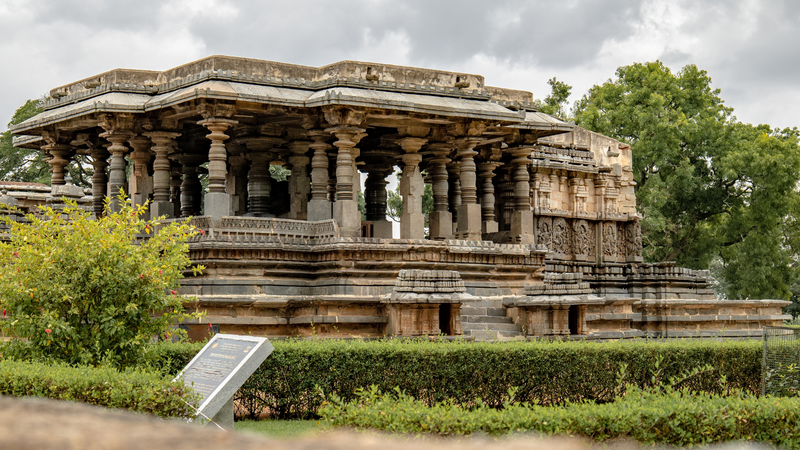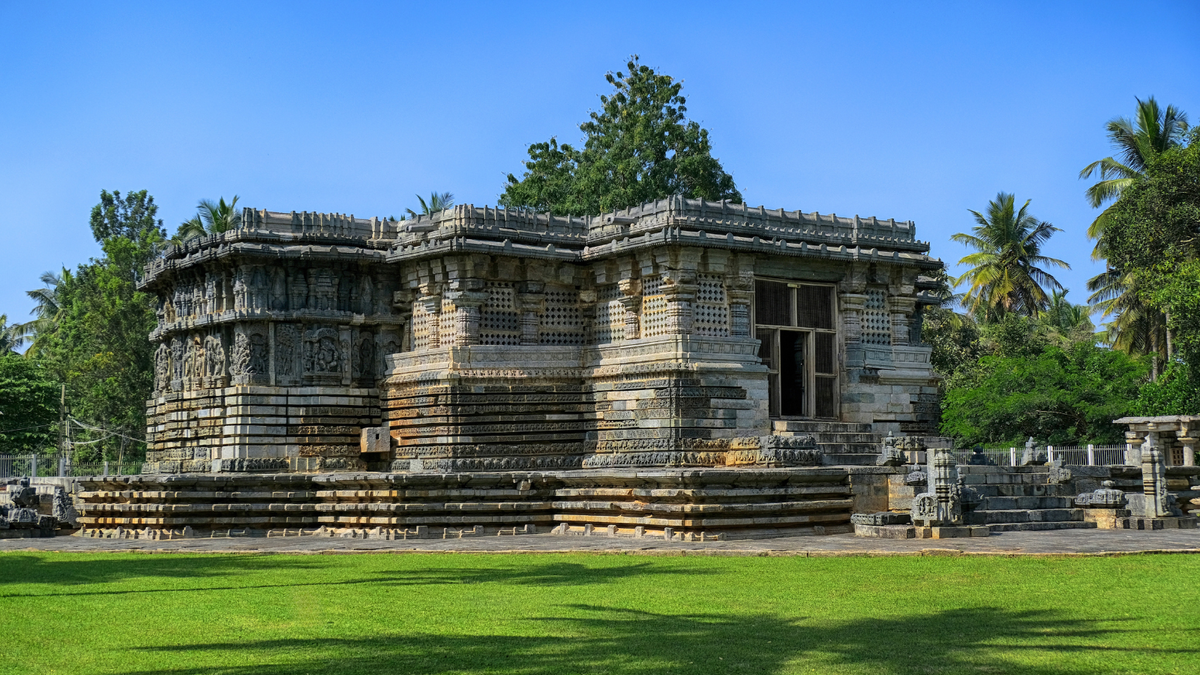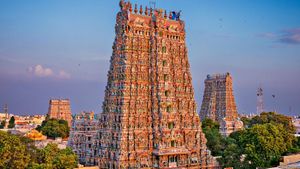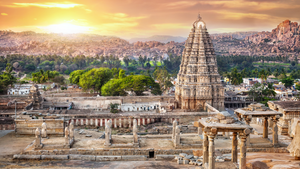The Hoysala temple art and structure is a critical architectural characteristic of Indian art records in Karnataka particularly. If we talk about the beginning and development of artwork and structure in South India, the foundation and evolution of Badami Chalukya architecture in Karnataka and Pallava architecture in Tamilnadu are significant. Often considered an offshoot of the Chalukya architecture, Hoysala is another style that deserves more attention.
The most essential and salient feature of the Hoysala temple architecture is the special kind of stone used. It’s popularly called the cleaning soap-stone. There are some beautiful Hoysala temples across Karnataka and here’s a list of all the places you can visit.
1. Chennakesava Temple, Belur

The Chennakeshava Temple in Belur is an ancient temple that has been one of the major tourist attractions in Karnataka. This is one of the finest temples in Karnataka that has been dedicated to Lord Vishnu or Keshava. At the entrance facing the Belur Chennakeshava Temple, you will be welcomed by the carrier of Lord Vishnu, named Garuda with joined palms as a sign of paying homage. Built in the shape of a star, the body of the Chennakeshava Temple contains numerous depictions and references to the Puranas, Upanishads, Ramayana, and Mahabharata. The walls contain elaborate friezes of battle scenes with charging Elephants and other mythological figures. Further, figures of heavenly nymphs in various postures such as singing and dancing have been sculpted on the walls. These figures are said to bear a strong resemblance with that of the beautiful wife of King Vishnuvardhan, named Shantala Devi.
Inside Chennakeshava Temple, stands the two-metre-high image of Lord Vishnu or Keshava. Besides, the images of the 10 incarnations of Vishnu as well as those of his wives namely Lakshmi (Goddess of Wealth) and Bhu (Earth God) can also be witnessed.
2. Halebidu Temple, Halebid

Halebidu temple is dedicated to Lord Shiva located in Halebid in Karnataka and was built by Ketamalla, a minister of KingVishnuvardhana in the 12th Century. The Hoysaleswara temple has the Idols of Hoysaleswara and Santaleswara. Hoysaleswara is named after King Vishnuvardhana Hoysala and Santaleswara after his wife, Queen Santala.
The sanctum is built on a stellar plan, with Sukhanasi, Navaranga and Nandi Mantapas. Each of these mantapas resembles the Belur Chennakesava temple in design. The Kedareswara temple built by King Ballala II, at Halebidu also in ruins is considered to be another masterpiece of architectural grandeur. As with the Hoysaleswara temple, this temple has classic figures and scenes from the epics. There are over a hundred images set on the upper parts of the walls. Also nearby are Jain temples dedicated to Parsvanatha, Santhanatha and Adinatha. It is believed that the temple derived its name from Vishnuvardhana Hoysaleswara, the presiding ruler in those times. However, the erection of the temple was started and sponsored by the affluent Shaiva citizens (mainly Ketamalla and Kesarasetti) of Halebid.
3. Veera Narayana Temple, Belavadi

The Veera Narayana temple is situated in Belavadi, a village (9 km from Chikmagalur town) in the Chikkamagaluru district of Karnataka state, India. It boasts of an old Hindu temple dedicated to God Vishnu, one of the Trinity gods. It is a fine contribution from the Hoysala empire. Known to legend as Ekachakranagara, Belavadi is, according to ancient legend, one of the Pandava brothers of the Mahabharata, Bheema protected and saved the people of this place from the demon Bakasura by killing him as his atrocities went far beyond the limit of tolerance. This temple with three ornate shrines (trikuta) was constructed in 1200 C.E .by the Hoysala ruler Veera Ballala II and all of them have a small tower over them. Unlike in many places, here the construction material is soapstone (composed largely of Magnesium rich talc, a product of metamorphism; its hardness is low, hence, it is used for inlaid designs, sculpture, coasters, and kitchen countertops).
It is the largest Hoysala temple more known for its architecture than other temples at Belur and Halebidu. Dedicated to God Vishnu, in the sanctum of each of the three shrines, there is an idol of Sri Vishnu in different avatars (incarnations). The central shrine, being older, has a big image of eight foot tall Narayana with four hands standing on a padmasana (lotus seat). The one on the south has an eight-foot-tall image of Venugopala ( god Krishna playing the flute) with a garuda pedestal. As for the northern shrine, here stands a seven-foot-tall image of Yoganarasimha, doing meditation in a sitting yogic posture.
Disclaimer: The details mentioned throughout this blog are sourced from publicly accessible platforms. At Zeezest, we intend to share factual and verified information. Should there be any inconsistencies or variances in the information provided, please understand that these are entirely unintentional and not meant to mislead.




